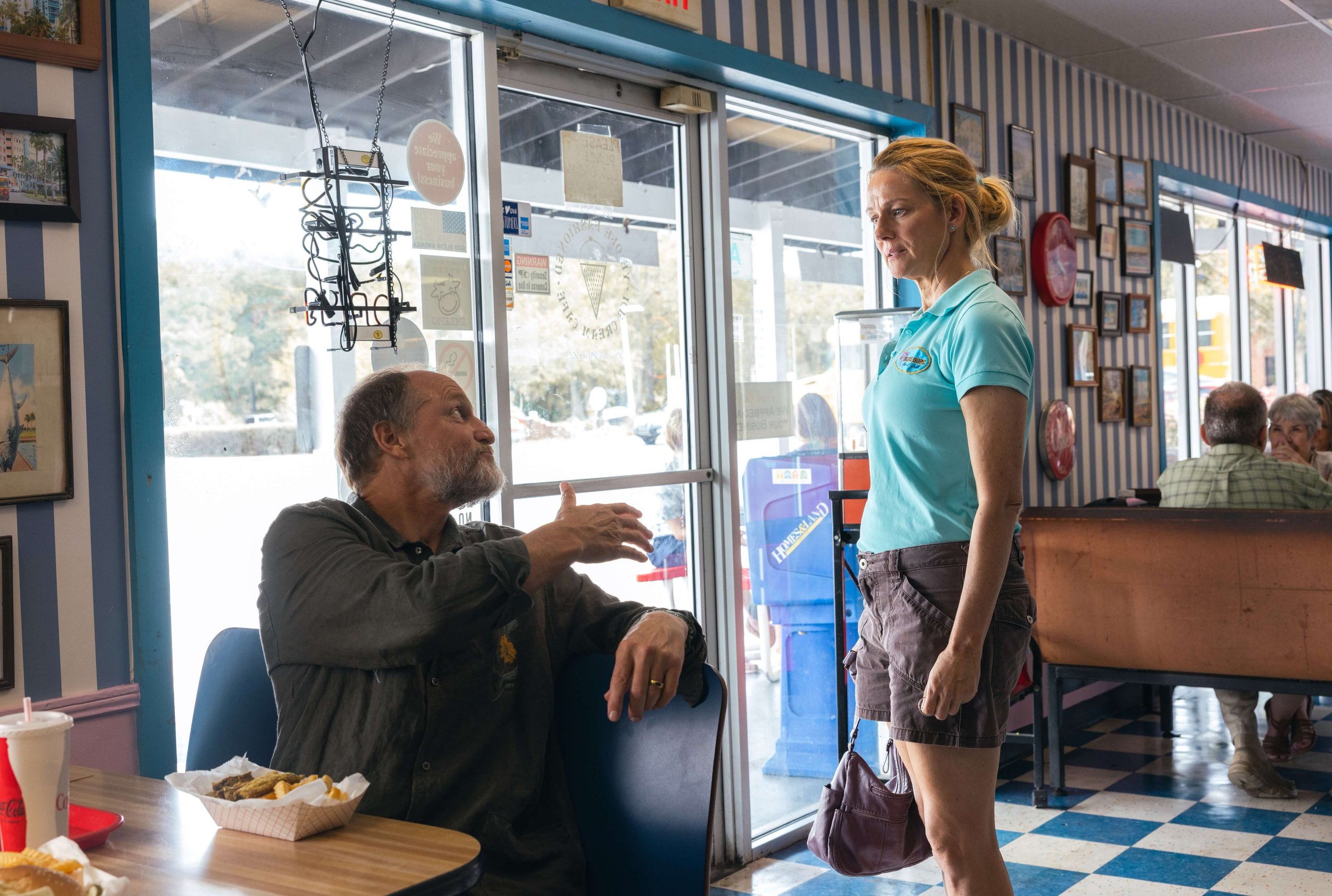Directed and written by: Laura Chinn
Starring: Nico Parker, Laura Linney, Woody Harrelson, and Cree Kawa
Runtime: 101 minutes
Parker and Linney deliver glowing, memorable performances in ‘Suncoast’
“You all have, like, saved my life.” – Doris (Nico Parker)
Doris is a 17-year-old Clearwater, Fla. teen. She lives in a pink house in a town with constant sunshine and a nearby beach, and our lead attends the reputable (and expensive) Clearwater Christian High School. Our heroine - apparently - leads a life that most kids in freezing cold Duluth, Minn. or snowy Buffalo, N.Y. could only imagine in their wildest hopes and dreams.
Alas, Doris’ most recent six years have not been ideal, not by a long shot.
Quite the opposite.
Her brother, Max (Cree Kawa), has brain cancer. He can no longer speak, see, or walk, and Doris has been his part-time caretaker and full-time agonizing sister, along with her anxious, snappy, and single mother, Kristine (Laura Linney). Kristine’s husband and Doris’ dad sadly passed away 14 years prior.
Very early in the first act of director/writer Laura Chinn’s indie drama, “Suncoast”, Kristine drives Max and Doris – in their beat-up Ford pickup, with the “R” and “D” missing on its tailgate – to place their beloved son and brother in a hospice center called Suncoast.
Chinn’s feature film debut is semi-autobiographical, and she tells “Vulture” in a Jan. 2024 interview, “When I was a teenager, my brother was moved into a hospice with Terri Schiavo, and her story was on the national news. I knew I wanted to tell that story someday.”
Terri Schiavo’s plight gripped the nation in 2005 as her husband and parents debated in the courts about Ms. Schiavo’s right to life, and this saga serves as a noisy backdrop for Doris’ family quandary. However, there is no dispute in Max’s case. His time left on Earth will tragically end due to natural causes.
“Suncoast”, which opened at the 2024 Sundance Film Festival, primarily champions Doris’ causes, ones of frustration, isolation, and her budding reach to thrive as a “normal” teenager.
The film shines with memorable performances from Parker and Linney. Woody Harrelson adds some nice touches. He plays Paul, Doris’ new friend who visits Suncoast to support Terri. Chinn also makes plentiful use of a southern small-town community. Even though filming occurred in South Carolina, just about everything on screen feels like Florida with warm tones, blue skies, and unkempt spaces dotted with unwanted – but accepted - crabgrass, including a wide-open spot where a 17-year-old kid learns how to drive.
Chinn uses conflicting tones and attempts to balance – although not perfectly - grief and loss with spurts of unexpected comedy and Doris’ trouble-free, coming-of-age journey. With Max’s death looming, Linney is flat-out fantastic in delivering frequent sarcastic, biting comments born from Kristine’s frustration and angst over the miserable cards that life dealt to Max. Our stressed-out mom casually refers to the hospice director as a sociopath and tells a concerned police officer that she “makes hospice bombs” in her spare time. No question, Kristine loves Doris, but our teen lead is never free from her mother’s criticism, demands, and scrutiny.
However, this also begs the question. Kristine unquestionably accepts that Paul, a 60-something man, is Doris’ new friend. On what planet would this 21st-century mother roll with Doris and Paul becoming pseudo-BFFs? Apparently, this one. Still, Harrelson’s Paul fills a purpose as a complementary adult for Doris to lean on for support, like Woody’s turn as Mr. Bruner in “The Edge of Seventeen” (2016).
Chinn plays with a couple of welcoming, noticeable contrasts in addition to Kristine and Paul.
For instance, Doris lives in a working-class neighborhood. She’s a poor girl growing up on the wrong side of the tracks, err…beach, and her wealthy classmates, who previously ignored this invisible introvert, suddenly accept her. It’s a classic – or recycled, depending on your point of view - case of income disparity via “Pretty in Pink” (1986) or “Some Kind of Wonderful” (1987). However, in this movie, Doris’ discoveries of friendship, games of truth or dare, and keg stands all become positive encounters with little or no resistance.
Yes, social breakthroughs of boyfriend discourse and gulps of alcohol present a reprieve from the cloudy overhang of her brother’s impending passing, but the constant camaraderie admittedly feels lightweight and without gravitas or consequences with her new friends, Brittany (Ella Anderson), Laci (Daniella Taylor), Nate (Amarr), and Megan (Ariel Martin).
Still, Brittany, Laci, Nate, and Megan are an escape, one free from consternation, and that’s by Chinn’s design. It’s a fair stance, even if one might nod off during affable and predictable shenanigans. Even though “Suncoast” tenders hints of “Valley Girl” (1983) and “Mean Girls” (2004), the writing and chemistry don’t match them.
However, the film’s intended chief disparity is that Doris finally finds a visible existence with her peers simultaneously as Max arrives at Suncoast, as an imminent loss furnishes new beginnings.
These two emotional movements cannot peacefully coexist, and Parker offers some powerful scenes that could shed tears from the driest of ducts.
Nico and we are wholly present in these moments.
Speaking of the present, “Suncoast” stays in the on-screen year of 2005 and doesn’t shuffle with constant flashbacks that could hurt the film’s deliberate, casual pacing, one that allows the audience to travel with Doris, Kristine, and Paul. This leaves Max as an unexplored individual, even though we see his motionless body throughout the picture. Additionally, the audience needs more time with Suncoast’s grief counselor, Sue (Pam Dougherty), and her informal sessions with Kristine. Chinn also explores religion, but more screentime on the pious topic is needed for the deliberation to stick.
Still, Parker’s and Linney’s glowing performances are enough to visit “Suncoast”.
Jeff’s ranking
2.5/4 stars















